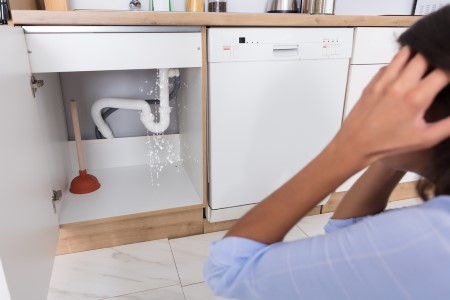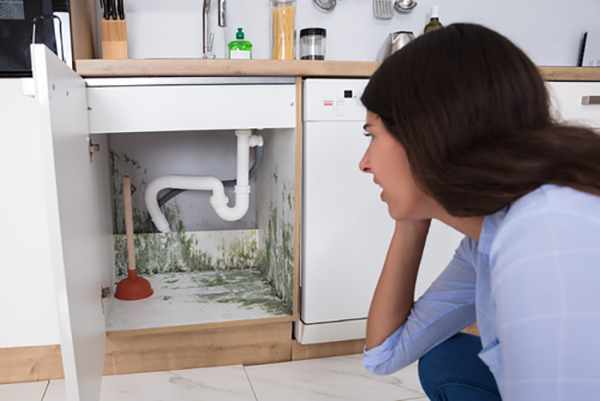Water Damage: Reasons, Clues as well as Solutions
Water Damage: Reasons, Clues as well as Solutions
Blog Article
We've stumbled upon this post about Most Common Causes of Residential Water Damage directly below on the internet and felt it made good sense to write about it with you in this article.

The kitchen is the room where a great deal of water task goes on. You can hardly do anything without using water in the cooking area, from cooking, cleaning, and doing the recipes.
Hence, examining your kitchen area periodically is a requirement. Since it has a higher chance of obtaining water damage due to the home appliances you use there, this is.
When damaged, these home appliances that control water might make your kitchen unpleasant as well as influence the framework of your building over time.
Let's examine out some reasons of the water damage in the kitchen and also what you must look out for.
Some Causes of Water Problems in the Kitchen area
These are a couple of root causes of water damage in the kitchen area.
Faulty Drainpipe Pipeline
Drain pipes Pipes are essential parts of our homes, specifically in our washrooms as well as cooking areas. They obtain defective by obtaining blocked, split, and also burst. Or even worse, they can be wrongly or freely connected; whichever the situation might be, it can be a serious issue.
Damaged drain pipes can create water damage and, consequently, trigger mold and mildew growth and damage the appearance of your wall. It can also make the afflicted location look unpleasant.
It is suggested always to check to make sure that all the pipelines are in excellent condition as well as obtain an audio pipes system to maintain as well as take care of any kind of concerns.
Faulty Kitchen Sink
The kitchen area sink is a crucial and also the majority of used part of the kitchen. It is susceptible to water damage; problems such as obstructed pipelines, dripping pipelines, and faulty faucets.
These damages can be bothersome, specifically when one is active in the cooking area. Nonetheless, it does not simply take place without giving a clue or a sign. Below are some indicators to understand when your sink is not fine
These are the major problems that can occur to your kitchen sink. One way to quit this damage is by making certain that food bits do not get right into the pipes. You are additionally inspecting the pipes and also faucets and also guaranteeing that it is effectively repaired and in good condition.
Dripping Dishwasher
Dish washers make life in the kitchen less complicated. Nevertheless, it is an optional kitchen home appliance and, when offered, can be a resource of water damage. In addition, like other equipments, it will create faults with time, despite upkeep.
One of the mistakes is leaking with the door or under the dishwasher. These mistakes develop because of age, splits, wrong use, loosened links to pipelines, and so on.
Faults as a result of age come from constant use. Consequently, the door leakages as a result of closing as well as opening up.
Mistakes from the incorrect usage may create water damage by presenting splits to it. Hence, it is advisable to follow the hands-on guide of the dishwashing machine to avoid this specific damage.
The leaks under the dishwashing machine can originate from splits in the gasket, hose, as well as loosened or incorrect connection to pipes or drains pipes.
This sort of leakage frequently goes unnoticed as well as can be there for a long period of time. Due to the time structure, it can damage the floor and cause mold growth.
Much more so, the longer the water remains, you will certainly see the bending of the floor where the dishwasher is. This is a great indication to keep an eye out for when examining if your dish washer leakages. Detecting and also fixing this on time avoids major water damage to your flooring.
Profits
Watching out for problems in your kitchen area can be charging yet needed. It makes your job there much easier and also more secure.
The causes noted above are only a few elements to consider, specifically if your cooking area has a whole lot of devices.
Obtain an expert plumbing service to come about and also inspect for any type of damage and also obtain them taken care of.
It makes your kitchen area wet and also unpleasant, specifically when leaking from the pipes. And if it is trickling from the tap, it leads to water waste.
It is an optional kitchen device and also, when readily available, can be a resource of water damage. Extra so, the longer the water remains, you will notice the bending of the floor where the dishwasher is. Detecting as well as fixing this on time protects against severe water damage to your flooring.
WAYS TO PROTECT YOUR KITCHEN FROM WATER DAMAGE
The kitchen is one of the most significant rooms in your house, as it is a multipurpose room wherein you can do your cooking and cleaning. Nowadays, homeowners tend to ignore the problems under their sink or appliances because of their busy schedules. However, most household floods occur due to plumbing and appliance failure. One of the most common scenarios that cause water damage to your kitchen is when the dishwasher malfunctions and floods gallons of water.
Water damage in your kitchen can cause several problems, including cosmetic damage, mold growth, and even an unpleasant smell. Often, if you fail to neglect the problem, there are always consequences. This article will help you protect your kitchen from water damage.
Common Causes of Water damage in your kitchen
Pipe problems are the most common source of water leaks under your sink. If homeowners ignore this issue, it will burst and flood the kitchen. Dishwasher leaks can be a source of water damage in your kitchen. An old, broken, and defective dishwasher can cause leaks, damage to your floor, and even mold growth. Refrigerator leaks can cause water damage in your kitchen, as sometimes melted ice from defrosting can cause leaks. Furthermore, if your refrigerator has internal problems, it is very likely to cause water damage. Back-splash and sink caulking can cause discoloration and water damage to your countertop tiles. Ways to Protect Your Kitchen From Water Damage
Regular maintenance
The most important thing you can do to protect your kitchen from water damage is to inspect the sinks, drains, and pipes, as well as the kitchen appliances, regularly. As with the sink, check for missing or deteriorated caulk. Remove the old caulk and clean the area thoroughly and re-seal it with fresh silicone. Furthermore, sweep the drain regularly, empty the filter and dispose of the debris in the garbage, and inspect the supply lines and valve for cracks.
Check your appliances
Check the user’s manual for instruction and proper use of every water-related appliance installed in your kitchen. For the dishwasher, check this procedure to prevent the dishwasher from flooding your kitchen. Check the appliances that need water, such as the coffee maker, ice maker, and water cooler, as they can become the cause of water damage in your kitchen. You may call a professional to check and repair damaged appliances and professional restoration for water damage clean-up.
Garbage clean-up
Fats, oil, and grease are common in the kitchen. Pouring them down the drain can cause clogs and sewage backup, which may result in significant kitchen water damage. If your kitchen sink is clogged, use a solution of hot water, baking soda, and vinegar to unclog the fats and oils in the pipes. Also, make sure to throw out the debris in the trash and clean the sink properly using paper towels for greases and oil and soap or bleach solution for the sink itself.
Shut off your water line
Make sure to shut off your main water line, especially if you're away and having some flood issue. As mentioned, dishwasher leaks are one of the most common culprits of water damage in the kitchen. So, make sure to only use the dishwasher if someone is at home and available to attend in case a problem arises.
Furthermore, it is also important that every member of your household knows where the shut-off valves are located. So in case of an emergency, they can mitigate the damage by turning off the water source.
Install leak detectors
One of the best ways to catch water damage before it could even cause serious damage to your home or business is by installing a water or leak detector. A leak detector monitors the flow of water through a pipeline, can detect moisture in the air for molds, and tracks the water temperature. Also, it can shut off your water line in case of an emergency. Install leak detectors under the kitchen sink, near the dishwasher and refrigerator.
https://superiorrestore.com/7-ways-to-protect-your-kitchen-from-water-damage/

Hopefully you enjoyed reading our article on Most Common Causes of Residential Water Damage . Thank you for taking a few minutes to read our content. Feel free to take a moment to share this blog post if you liked it. Many thanks for your time spent reading it.
Pest Control Expert Report this page